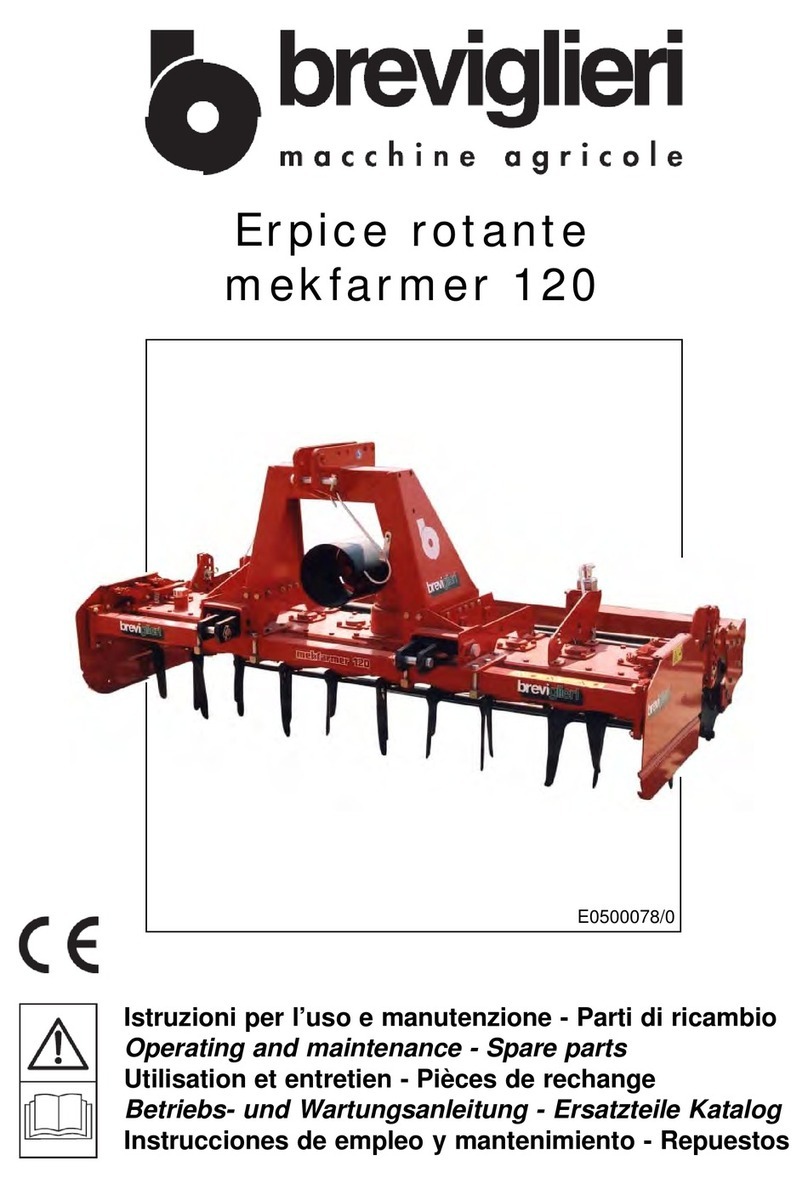7. Take all possible precautions when
leaving the machine unattended. Stop the
engine. Disconnect spark plug wire and
move it away from the spark plug. Move
Wheel Gear Lever to ENGAGE.
8. Before cleaning, repairing, or inspect-
ing, stop the engine and make certain all
moving parts have stopped. Disconnect
the spark plug wire and prevent it from
touching the spark plug to prevent acci-
dental starting.
9. Always keep the tiller tine hood flap
down.
10. Never use the tiller unless proper
guards, plates, or other safety protective
devices are in place.
11. Do not run engine in an enclosed
area. Engine exhaust contains carbon
monoxide gas, a deadly poison that is
odorless, colorless, and tasteless.
12. Keep children and pets away.
13. Never operate the tiller under
engine power if the Wheel Gear Lever is
in DISENGAGE (FREEWHEEL). In this
position, the wheels will not hold the
tiller back and the revolving tines could
propel the tiller rapidly backward, pos-
sibly causing loss of control. Always
move the Wheel Gear Lever to ENGAGE
before starting the engine or engaging the
tines/wheels with the Forward Clutch or
the Reverse Clutch.
14. Be aware that the tiller may unexpect-
edly bounce upward or jump backward if
the tines should strike extremely hard
packed soil, frozen ground, or buried
obstacles like large stones, roots, or
stumps. If in doubt about the tilling con-
ditions, always use the following operat-
ing precautions to assist you in
maintaining control of the tiller:
a. Walk behind and to one side of the
tiller, using one hand on the han-
dlebars. Relax your arm, but use a
secure hand grip.
b. Use slower engine speeds.
c. Clear the tilling area of all large
stones, roots and other debris.
d. Avoid using downward pressure
on handlebars. If need be, use
slight upward pressure to keep the
tines from digging too deeply.
e. Before contacting hard packed soil
at the end of a row, reduce engine
speed and lift handlebars to raise
tines out of the soil.
f. In an emergency, stop tines and
wheels by releasing whichever
Clutch Lever is engaged. Do not
attempt to restrain the tiller.
15. Do not overload the tiller’s capacity
by attempting to till too deeply at too fast
a rate.
16. Never operate the tiller at high trans-
port speeds on slippery surfaces. Look
behind and use care when backing up.
17. Do not operate the tiller on a slope
that is too steep for safety. When on
slopes, slow down and make sure you
have good footing. Never permit the tiller
to freewheel down slopes.
18. Never allow bystanders near the unit.
19. Only use attachments and acces-
sories that are approved by Garden Way
Inc.
20. Use tiller attachments and acces-
sories when recommended.
21. Never operate the tiller without good
visibility or light.
22. Never operate the tiller if you are tired,
or under the influence of alcohol, drugs or
medication.
23. Operators shall not tamper with the
engine-governor settings on the machine;
the governor controls the maximum safe
operating speed to protect the engine and
all moving parts from damage caused by
overspeed. Authorized service shall be
sought if a problem exists.
24. Do not touch engine parts which may
be hot from operation. Let parts cool down
sufficiently.
25. Please remember: You can always stop
the tines and wheels by releasing the
Forward Clutch Lever or the Reverse Clutch
Lever (whichever lever you have engaged)
or by moving the Throttle Control Lever to
STOP.
26. To load or unload the tiller, see the
instructions in Section 4 of this Manual.
27. Use extreme caution when reversing or
pulling the machine towards you.
28. Start the engine carefully according to
instructions and with feet well away from
the tines.
29. Never pick up or carry a machine while
the engine is running.
Maintenance and Storage
1. Keep the tiller, attachments and acces-
sories in safe working condition.
2. Check all nuts, bolts, and screws at
frequent intervals for proper tightness to
be sure the equipment is in safe working
condition.
3. Never store the tiller with fuel in the fuel
tank inside a building where ignition
sources are present such as hot water and
space heaters, furnaces, clothes dryers,
stoves, electric motors, etc.). Allow engine
to cool before storing in any enclosure.
4. To reduce the chances of a fire hazard,
keep the engine free of grass, leaves, or
excessive grease.
5. Store gasoline in a cool, well-ventilated
area, safely away from any spark- or
flame-producing equipment. Store gaso-
line in an approved container, safely away
from the reach of children.
6. Refer to the Maintenance sections of
this Manual and the separate Engine
Owner’s Manual for instructions if the
tiller is to be stored for an extended
period.
7. Never perform maintenance while the
engine is running or the spark plug wire is
connected, except when specifically
instructed to do so.
8. If the fuel tank has to be drained, do
this outdoors.
4
Section 1: Safety



























